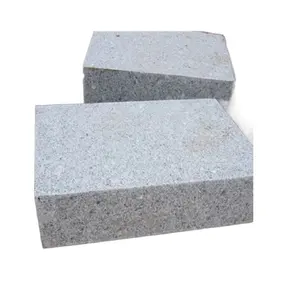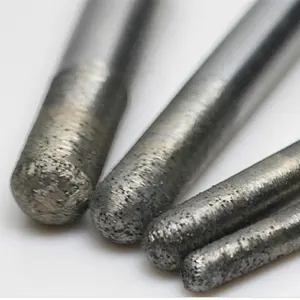
All categories
Featured selections
Trade Assurance
Buyer Central
Help Center
Get the app
Become a supplier

(1280 products available)

















































Granite is one of the most popular stones in the construction industry. This is because it is durable and comes in different colors and designs. It consists of quartz, feldspar, and other minerals, making it a beautiful and hard stone. It is a preferred choice for many builders and architects because of its beauty and low maintenance. This makes granite a go-to choice for many people. Rough granite stone blocks are used as building stones for foundations, walls, and other structures. It is used for both residential and commercial buildings. Due to its popularity, the demand for granite blocks is high among builders and architects. Understanding the different types of rough granite blocks can help in making informed purchases.
Granite blocks are divided into two main categories: bulk and dressed blocks.
Granite can also be divided into different categories based on size. These categories include:
Granite stone blocks have numerous applications in construction due to their unique properties. The features of rough granite blocks that make them ideal for use in construction include:
Durability
Granite does not wear or scratch easily, making it ideal for high-traffic areas. Its amazing resistance to deterioration and heat makes it a popular choice for kitchens because it remains beautiful over time and is a practical choice for food preparation. Additionally, its toughness means that even pots and pans used in cooking will not leave marks on the surface.
Density
Granite is dense, which means it is not porous. This feature makes granite blocks a preferred choice for areas that require hygiene, such as hospitals and kitchens. Because it is not porous, granite is also simple to clean and prevents the growth of bacteria and germs.
Aesthetic appeal
The aesthetic appeal of granite makes it a popular choice for use in construction. Its timeless beauty makes it a choice material for use in creating grand and beautiful features in homes. Additionally, the wide range of colors and patterns allows for creativity and gives the designer a choice to choose from options that suit their needs.
Low maintenance
Granite is simple to clean, and as long as it is properly maintained, it will keep its luster and shine for a long time. Because of its low maintenance needs, granite is suitable for people who do not have enough time to spend cleaning and maintaining it.
Versatility
Granite is versatile and can be used in different areas, including kitchens, bathrooms, and outdoor spaces. It can be used to create different features, such as countertops, floors, and walls, giving the space a uniform design and creating a beautiful contrast.
Appearance and finishes
Granite has different appearances, from highly polished, smooth, and shiny surfaces to more textured and rough finishes. This allows designers to choose the stone blocks that match their design needs. The finishes also add beauty and create a unique visual impact.
The rough granite stone blocks have various applications, which include:
When choosing rough granite blocks, it's essential to consider several factors to ensure that the selected blocks meet the intended project's requirements. Here are some tips to consider when choosing:
Consider the Purpose
It's vital to determine the intended use of the granite blocks for landscaping, construction or artistic purposes. Different applications have varying requirements, so understanding the purpose will guide the selection process and ensure the blocks chosen are suitable for that specific project.
Color and Veining
The color and veining of granite affect both aesthetics and performance. Dark granite slabs with consistent veining offer a dramatic look, while light-colored slabs with intricate veining provide visual interest. It's essential to choose the right color and veining system that complements the design vision and meets the functional requirements.
Check for Quality and Structural Integrity
It's necessary to ensure that the granite blocks are free from any cracks, flaws, or defects that may compromise their quality. Look for blocks with consistent texture, color and patterns. This will ensure that the blocks have structural integrity and durability, providing long-term value for any construction project.
Availability and Supply
Consider the availability and supply of granite blocks from different quarries. Some quarries specialize in specific colors or finishes, affecting the availability of the blocks. It's necessary to ensure a consistent supply of the granite blocks, especially for large projects where uniformity is essential.
Accessibility and Transportation
The factors to consider when selecting granite blocks include the accessibility of the quarry and the transportation options available. These factors affect the cost and feasibility of the project. It's necessary to evaluate these factors carefully to ensure the selected blocks are accessible and can be transported efficiently to the construction site.
Q1: How does one choose the right type of granite for each project?
A1: Consider factors such as color, texture, and durability. For aesthetic appeal, choose a color and texture that will complement the design. Consider the slab's longevity and resistance to wear and tear, especially for heavily used areas. Choose granite's finishing based on its intended use. Polished granite is ideal for countertops, while flamed or honed finishes are suitable for outdoor spaces.
Q2: What are the different types of rough granite stone blocks?
A2: They include pink granite, black granite, white granite, and cobalt blue granite. Pink granite is distinguished by its light gray background and pink flecks. Pink granite's aesthetically pleasing appearance makes it a popular choice for monuments and decorative features. Cobalt blue granite is recognized for its striking blue color and durability. Cobalt blue granite is often used in high-end kitchen and bathroom countertops.
Q3: Is granite sustainable?
A3: Granite is not renewable but can be recycled. While granite is not sustainable in the sense that it is not renewable, it can be recycled. When the recycled granite is processed, it can be used to produce new products, reducing the need for new raw materials and minimizing waste.
Q4: Do rough granite stone blocks fade over time?
A4: No, rough granite stone blocks do not fade over time because they are durable and resistant to wear and tear. Granite is known for its exceptional durability and resistance to fading. Unlike some other materials, granite can withstand exposure to sunlight, heat, and harsh weather conditions without losing its color or brilliance. This makes granite an excellent choice for both indoor and outdoor applications.
Q5: How should granite be maintained to preserve its appearance?
A5: Granite maintenance is easy because it only needs regular cleaning with mild soap and water. Granite maintenance is relatively straightforward. Regular cleaning with mild soap and water is usually sufficient to keep granite surfaces looking great. For outdoor spaces, occasional pressure washing may be needed. It's also a good idea to reseal granite countertops every few years to maintain their stain resistance.